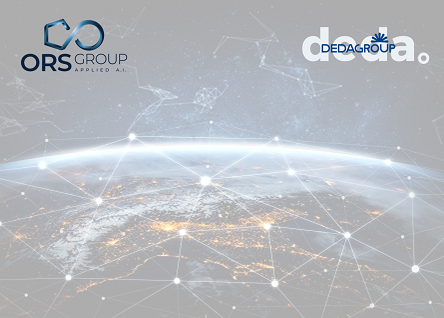When business needs collide with an uncertain and unpredictable environment—marked by instability factors such as ongoing geopolitical tensions and challenges in global supply chains—technological advancements play a crucial role in rethinking traditional models. They drive systemic evolution, generating innovation and transformation.
Today more than ever, the macroeconomic landscape pushes companies to seek better, faster decision-making, optimizing processes to enable intelligent resource allocation. In this context, Artificial Intelligence emerges as one of the most important enabling technologies. In fact, in 2021, AI-related investments rose by 31% compared to the previous year, confirming a growing interest in long-term, data-driven transformation paths.

However, several obstacles still hinder its full adoption. First, many organizations struggle to collect large volumes of data, often lacking data entirely or working with low-quality information. Second, there is a mismatch between the skills companies need to develop AI-based in-house solutions and those currently available in the labor market. This divide—particularly between large corporations and SMEs—is one that the Italian National AI Strategy, launched in 2021, aims to reduce by strengthening sector-specific competencies at all levels and increasing research funding to bridge the technical gap.
Today, optimizing business processes means more than simply reducing execution time. It represents a paradigm shift, necessary to improve the efficiency of each process by implementing systems that support both strategic and operational decisions. The goal is to regain control over actions in a constantly evolving environment, while building a new capacity for adaptability that reshapes business models to become more flexible and responsive.
For instance, AI and machine learning algorithms can play a key role in transforming some of the most critical sectors of our society: In the Energy & Utilities sector, they can optimize energy input and consumption, contributing to better network balancing and supporting the shift toward renewable energy integration. Predictive systems can also forecast wind and solar energy production by transitioning from static averages to dynamic ones that consider exogenous variables like weather conditions, sun exposure, and wind direction and strength. In infrastructure maintenance, AI can automatically detect disturbances and mechanical failures in real time, improving the reliability and efficiency of power systems. In the pharmaceutical industry, AI can optimize the management and coordination of product and medicine exchanges by monitoring various stages across the production and distribution chain.
What emerges is that Artificial Intelligence can trigger a systemic transformation—both economic and social—opening up new ways of understanding and responding to the needs of our time.


